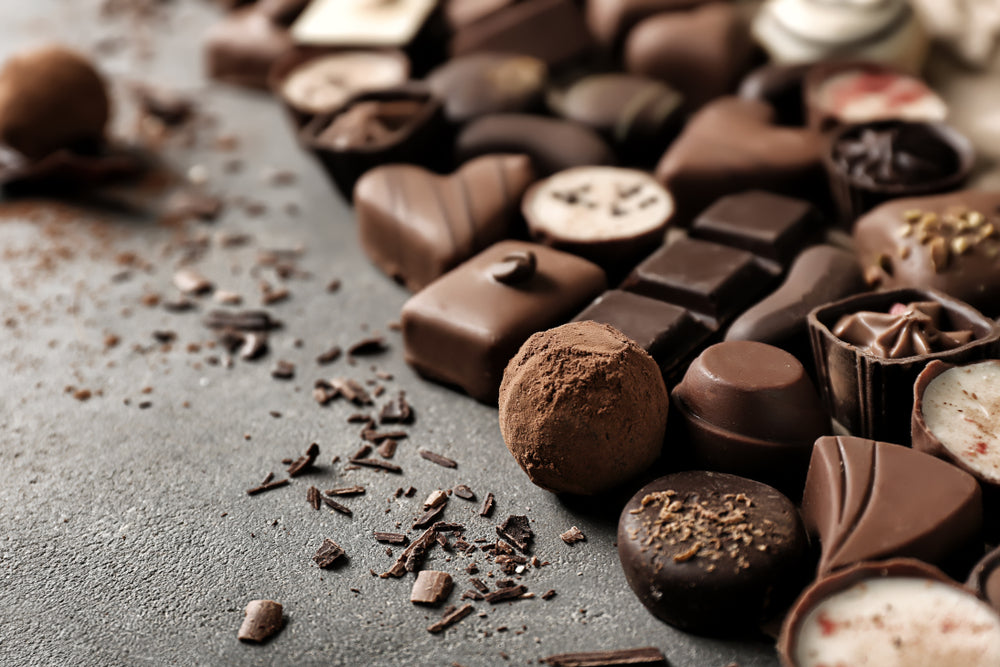
What Makes a Snack Both Delicious and Nutritious?
Share
Snacking can often feel like a compromise. We either reach for something delicious that satisfies our cravings but leaves us feeling guilty, or we opt for a healthier option that can sometimes lack the excitement of indulgence. But does it have to be one or the other? What if you could have snacks that are both delicious and nutritious? Understanding the balance between taste and nutrition can help you make choices that satisfy both your palate and your body’s needs.
1. The Importance of Nutrient-Dense Ingredients
A nutritious snack is one that provides essential vitamins, minerals, and other nutrients without excessive calories or unhealthy additives. These nutrients should support your energy levels and overall health. Some of the most important nutrient-dense ingredients include:
- Whole Grains: Rich in fiber, whole grains like oats, quinoa, and whole wheat help stabilize blood sugar and keep you feeling full longer.
- Fruits: Nature’s candy, fruits are packed with vitamins, antioxidants, and fiber. Dried fruits, like dates or apricots, can add sweetness without the need for refined sugar.
- Nuts and Seeds: These are high in healthy fats, protein, and various vitamins. They provide a satisfying crunch and can be a great energy booster.
- Dark Chocolate: High-quality dark chocolate (70% cacao or more) offers antioxidants, reduces inflammation, and satisfies sweet cravings with less sugar than milk chocolate.
2. Balancing Macronutrients
To make a snack both delicious and nutritious, it’s essential to balance macronutrients — carbohydrates, fats, and proteins. When these are combined, you create a more satisfying snack that fuels your body properly.
- Carbohydrates provide quick energy, but pairing them with proteins and fats helps slow digestion and keeps you fuller longer.
- Proteins are crucial for tissue repair and building muscle. Including a source of protein, like Greek yogurt, nuts, or cheese, can help with satiety.
- Healthy Fats from sources like avocados, nuts, seeds, and coconut can give snacks a creamy texture and a feeling of indulgence while also supporting heart health.
A great example of a balanced snack is Dateolate (a snack made from dates and nuts coated with dark chocolate), which offers a healthy dose of carbohydrates from dates, fats from nuts, and antioxidants from dark chocolate. It’s both sweet and nutrient-rich, satisfying cravings while nourishing your body.
3. Incorporating Natural Sweeteners
One common pitfall of many snacks is the inclusion of refined sugars. While sugar can make things taste amazing, it often leads to an energy crash and provides no nutritional benefits. Instead, focus on natural sweeteners like:
- Dates: Rich in fiber and antioxidants, dates are a great natural sweetener that can enhance the flavor of snacks without causing a spike in blood sugar.
- Honey: While still high in sugar, honey is packed with enzymes and antioxidants.
- Maple Syrup: A plant-based sweetener with nutrients like manganese and zinc.
Natural sweeteners can make nutritious snacks taste indulgent without the negative side effects of refined sugar.
4. Flavor and Texture Variety
A snack that’s both delicious and nutritious should also offer a variety of flavors and textures. Combining crunchy, creamy, and chewy elements can elevate a snack’s appeal, making it more satisfying to eat.
- Crunchy: Nuts, seeds, and granola offer a satisfying crunch.
- Creamy: Nut butters, avocados, and yogurt provide a smooth and rich texture.
- Chewy: Dried fruits like raisins or dates add a chewy consistency that complements other textures.
Combining these textures can make a simple snack feel gourmet, while still delivering essential nutrients.
5. Portion Control and Satisfaction
Even the most nutritious snack can become unhealthy if consumed in large quantities. The key to a successful snack is portion control. Smaller portions allow you to indulge in delicious flavors without overloading your body with excess calories or sugar.
For example, while nuts and seeds are incredibly nutritious, they are also calorie-dense. Pairing a small portion of nuts with dried fruit or dark chocolate creates a satisfying, balanced snack without going overboard.
6. Customizing to Meet Dietary Needs
The beauty of nutritious snacks is that they can be tailored to meet individual dietary needs. Whether you’re gluten-free, vegan, or paleo, there are endless combinations of ingredients that can make your snacks both delicious and aligned with your dietary goals. For instance:
- Gluten-Free Options: Swap wheat-based crackers for rice cakes or gluten-free granola.
- Vegan Alternatives: Use plant-based protein sources like hummus, almond butter, or vegan yogurt.
- Low-Carb Choices: Replace high-carb snacks with options like cheese, nuts, or veggie sticks with guacamole.
When you customize your snacks to fit your specific needs, you can enjoy them without worry while still getting the nutrition you require.
Finding the Balance
Creating snacks that are both delicious and nutritious doesn’t have to be difficult. By focusing on nutrient-dense ingredients, balancing macronutrients, incorporating natural sweeteners, and experimenting with different flavors and textures, you can enjoy snacks that satisfy your taste buds while nourishing your body. Remember that portion control is key, and there are endless ways to customize snacks to meet your dietary preferences.
Next time you reach for a snack, think about how it can do more for you. The right combination of delicious and nutritious elements will leave you feeling energized and satisfied.
